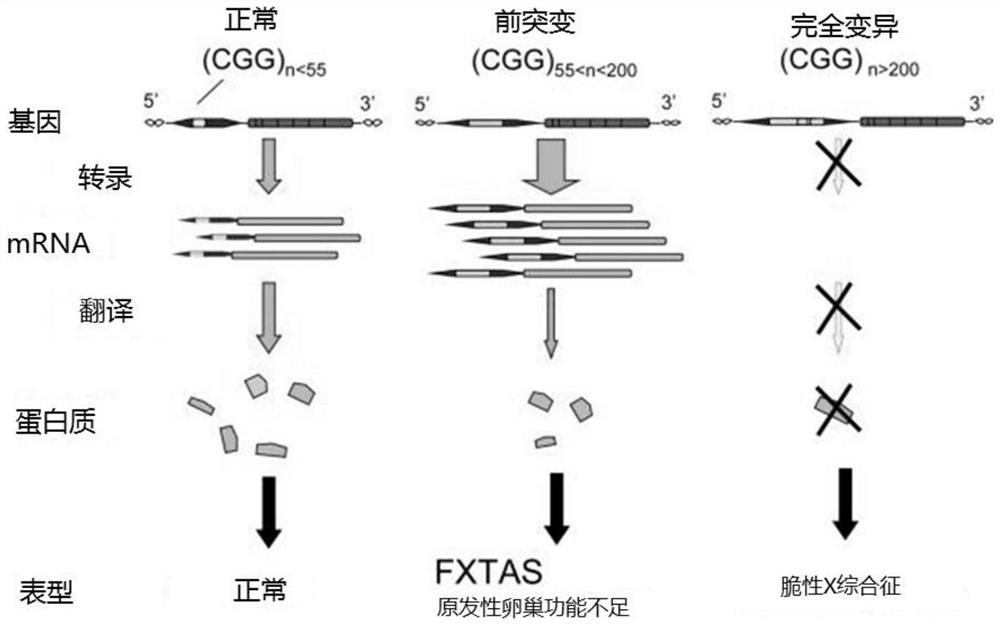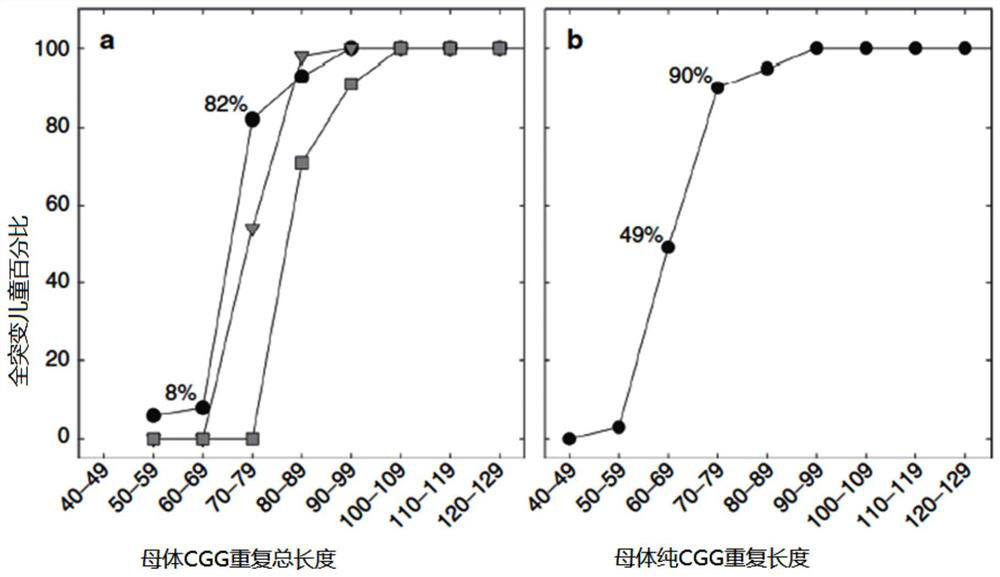A kit for determining the number and position of agg insertions in the cgg repeat sequence of fmr1 gene and its application method
A repeat sequence and kit technology, applied in the field of bioengineering, can solve problems such as uncertainty, and achieve the effects of preventing high-risk pregnancy, improving fertility risks, and reducing morbidity.
- Summary
- Abstract
- Description
- Claims
- Application Information
AI Technical Summary
Problems solved by technology
Method used
Image
Examples
Embodiment 1
[0046] A kit for determining the number and position of AGG insertions in the CGG repeat sequence of the FMR1 gene, including primers, PCR reaction solution, high-efficiency DNA polymerase for the CGG sequence, FMR1 gene pre-mutation control (quality control), FMR1 Gene normal control substance (quality control substance), ROX marker (specific DNA molecular fragment suitable for capillary electrophoresis) and deionized water.
[0047] The primer group includes an upstream primer F and a downstream primer R that specifically anneal at the AGG place and amplifies a part of the FMR1 gene CGG repeat region, and the sequence of the upstream primer F is CGGCGGCGGCGGCGAA, as shown in SEQ ID NO: 1, and the downstream The sequence of the primer R is ACCAGCTCCTCCATCTTCCTTCAG, as shown in SEQ ID NO: 2, and the 5' end of the downstream primer R is marked with a fluorescent probe.
[0048] The upstream primer is paired with the CGG repeat sequence of the 5' non-coding region of the FMR1 ge...
Embodiment 2
[0070] Such as Figure 4 As shown, the kit described in Example 1 was used to detect the sample. The sample came from a carrier of the FMR1 gene pre-mutation. In this carrier, the number of CGG repeats was 56 / 30. Substituting 153.41 into the formula equals 24.04. This value is equal to the number of CGG repeats after AGG on a longer CGG sequence. It is known that the first AGG appears after at least 9 CGGs, so it can be known that the amplified product at 153.41 comes from the pre-mutant allele (56 CGGs). The higher peak at the front comes from the AGG insertion shared by the two alleles of 56 CGG and 30 CGG, so the signal intensity is about twice that of the latter. It can be seen that there are three AGG insertions in the two FMR1 genes of the female carrier, two of which are located in the pre-mutation allele and one is located in the wild-type allele.
[0071] To sum up, with the help of the above-mentioned technical scheme of the present invention, through specific pri...
PUM
 Login to View More
Login to View More Abstract
Description
Claims
Application Information
 Login to View More
Login to View More - R&D
- Intellectual Property
- Life Sciences
- Materials
- Tech Scout
- Unparalleled Data Quality
- Higher Quality Content
- 60% Fewer Hallucinations
Browse by: Latest US Patents, China's latest patents, Technical Efficacy Thesaurus, Application Domain, Technology Topic, Popular Technical Reports.
© 2025 PatSnap. All rights reserved.Legal|Privacy policy|Modern Slavery Act Transparency Statement|Sitemap|About US| Contact US: help@patsnap.com



